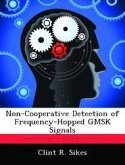The global positioning system (GPS) provides high-accuracy position measurements anywhere in the world. However, a limitation of this system is that a line of sight to multiple satellites is required; therefore, it is unsuitable to use indoors or in urban canyons. Also, in the presence of radio-frequency interference or jamming, GPS may be unavailable. Alternative methods of navigation and positioning are need to either compliment GPS as a backup or for use in areas unreachable by satellites. This research analyzes a feature-based correlation approach for determining reception differences between two Orthogonal Frequency Division receivers for the purpose of TDOA calculations. Multicarrier signals have a very defined signal structure which allows for non-cooperative symbol detection techniques. Simulations are conducted with different correlation windows sizes, SNR values, and eight different statistical features.
Hinweis: Dieser Artikel kann nur an eine deutsche Lieferadresse ausgeliefert werden.
Hinweis: Dieser Artikel kann nur an eine deutsche Lieferadresse ausgeliefert werden.








